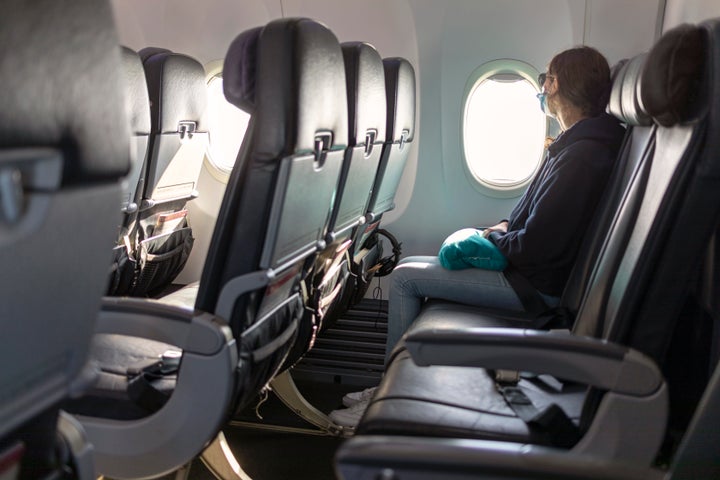
These days, there are countless air travel products on the market, from space-maximizing suitcases to ergonomic pillows to portable chargers.
While everyone has their individual gadget preferences, there’s one item all avid travelers should pack in their carry-on luggage for lengthy flights: compression socks.
Sitting still for long stretches of time isn’t just boring ― it’s also bad for your circulation. Wearing compression socks or stockings can help, though. Below, doctors break down the function of this legwear on flights and share other advice for promoting vascular health during your travels.
Why are compression socks important?
“Normally, blood flow through the veins and back to the heart is augmented by the calf muscle pump,” said Dr. Scott N. Hurlbert, a vascular surgeon at UCHealth Vein and Vascular Surgery Center in Colorado Springs, Colorado. “When you are traveling by air, you usually don’t have much room to move around. As a result, the blood becomes more stagnant, which can lead to blood clots.”
Basically, contracting your calf muscles helps pump blood back to your heart. So, when you’re immobilised, that isn’t happening. Thus, flying may increase your risk of developing a type of blood clot called deep vein thrombosis, or DVT.
“Another issue with air travel is dehydration, which can also predispose [someone] to blood clots,” Hurlbert noted. “There is also increased pressure in the veins, which can cause swelling.”
How do compression socks work?
“Compression socks are useful for lowering the risk of DVT as they mimic the contraction function of the calf muscles, even when you are not walking,” said Dr. Michael Go, an associate professor in the division of vascular diseases and surgery at The Ohio State University Wexner Medical Center.
“They are also good at preventing the leg swelling that some people get after a long plane trip,” Go added.
Put simply, compression socks apply external pressure to your lower legs, which ― as the name suggests ― compresses the veins and keeps the blood flowing.
“Graduated compression stockings can also be worn, which gently squeeze the ankles and calves, working against gravity and reducing the amount of blood that pools in the lower leg veins,” said Dr. Sachin Nagrani, medical director at the home health care service Heal.
When should you wear compression socks?
“Longer flights, particularly those lasting four hours or more, create more risk for the possibility of a blood clot,” said Nagrani. “For individuals at increased risk of DVT, it’s recommended to speak to your primary care doctor about compression socks and other individually focused preventive measures.”
Hulbert noted that the risk of blood clots during air travel is overall low, but increases as the time spent in the air increases. Thus, he also supports the recommendation to wear compression stockings for flights longer than four or five hours ― especially if you’ve developed leg swelling or blood clots in the past or have a family history of clotting.
“If a person is prone to developing blood clots or has swelling in their legs with shorter trips, then they should wear them for any duration of trip,” Hulbert added.
What else can you do to prevent blood clots?
“The primary measure to prevent DVT is movement, so if you’re on a flight lasting longer than four hours it’s wise to move your legs while seated routinely and consider standing up and walking the aisle to ensure good circulation,” Nagrani said.
He advised moving at least every two hours as a general in-flight practice.
“The more a person is able to activate the calf muscle pump, the better,” Hulbert said. “Toe raises are a great exercise that doesn’t require a lot of room to do.”
Other ways to promote good circulation during a flight include staying hydrated and wearing loose clothing. And don’t forget to take care of yourself on non-travel days as well.
Said Nagrani: “In everyday life, regular physical activity, healthy eating, and not using tobacco products will benefit you in countless ways, including blood clot prevention.”